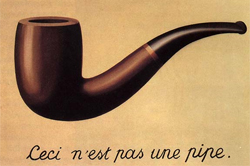The 3 Buckets of Web Distribution: Get On To the Pageless Web
In the cloud, nobody can tell if you’re a web page.
In talking with people about the post The Siteless Web and the End of Brand Website Rule: Web 3.0, I found myself suggesting that online visitors will encounter us through three types of experiences:
- Sites we control: traditional, publishing-based information distribution.
- Sites others control: content and social networks that put our message under others’ control.
- Applications: either as interface, such as Tweetdeck, or as aggregation point, such as Salesforce.
Of course, sites others control are quite likely driven by applications. Facebook is an application; so is Google search. But they typically appear to users as websites.
The move away from a page-based user-experience to an application metaphor has been slowly approaching for years. The “portal” was said to break that metaphor. Same with the idea of the application put on online and sold as a service. This has been a slow shift. Video, AJAX, and data-driven services all exceed the page metaphor. It’s been hanging by a thread for some time.
However, there is a huge change happening in how people access the web. The move from “screen” to “hand-held” is the continental divide that will shift development away from the page metaphor.
- 75% of Twitter access doesn’t come through its web page at all. It’s through API-integrated applications, which provide a richer, easier-to-use application-type experience, particularly via mobile devices.
- Consider the proliferation of mobile applications for iPhone and iPad – the internet will be increasingly used as a medium for people interacting with applications, not browsers and HTML pages.
The Web Has No Pages, Really.
 Web pages are not pages at all. In some ways they are still inferior to their printer counterparts. Turning a page is instant; loading a page is still far from that. Viewing a page is consistent with the designer’s execution, while web pages render in a variety of ways, based on programming and browser technology.
Web pages are not pages at all. In some ways they are still inferior to their printer counterparts. Turning a page is instant; loading a page is still far from that. Viewing a page is consistent with the designer’s execution, while web pages render in a variety of ways, based on programming and browser technology.
As we move from the screen to hand display, we will consume ever more information through applications. They provide more consistent, space-concentrated, responsive user experiences. Web and application design will completely overlap.
Will Corporate and Brand Websites Still Have a Place?
Absolutely. But the Chief Listening Officer and Engagement Architects from the company application will have a greater share of the juicer innovation projects that define the firm.
Compare this to annual reports, business cards, or printed resumes. Corporations still make lovely annual reports. They just don’t matter as much now that other channels provide richer expressions of the corporate brand. People still have business cards, but when was the last time you were impressed by high-quality card stock?
So by all means finish that corporate website redesign. But then, seriously, it’s time to look to the other buckets of web distribution and figure out what’s really next.

 The future of digital experiences will be built by strategists who grasp the full array of emerging business, social, and technical models. Specialties in user experience, branding, application design, and data science are laying the foundation for richer user experiences and business models breakthrough products and revenue based marketing.
The future of digital experiences will be built by strategists who grasp the full array of emerging business, social, and technical models. Specialties in user experience, branding, application design, and data science are laying the foundation for richer user experiences and business models breakthrough products and revenue based marketing.
2 Responses to "The 3 Buckets of Web Distribution: Get On To the Pageless Web"
April 21, 2010
Hey Dave. Great summary on the state of the web.
April 21, 2010
Hey, thanks, Cecil!
Situation normal, everything’s changing.
Just trying to keep skating to where the best revenue and art is headed.
Best,
Dave